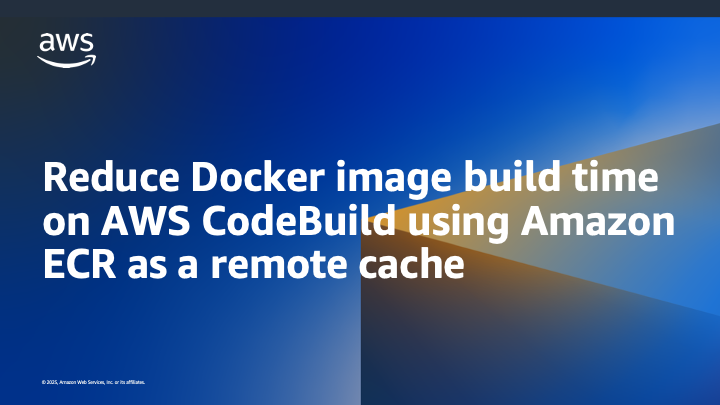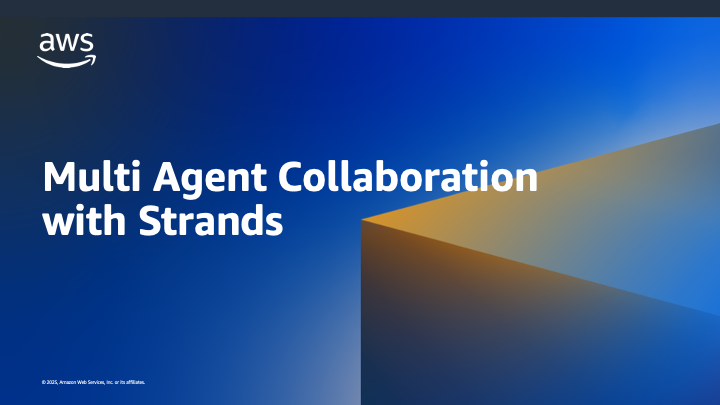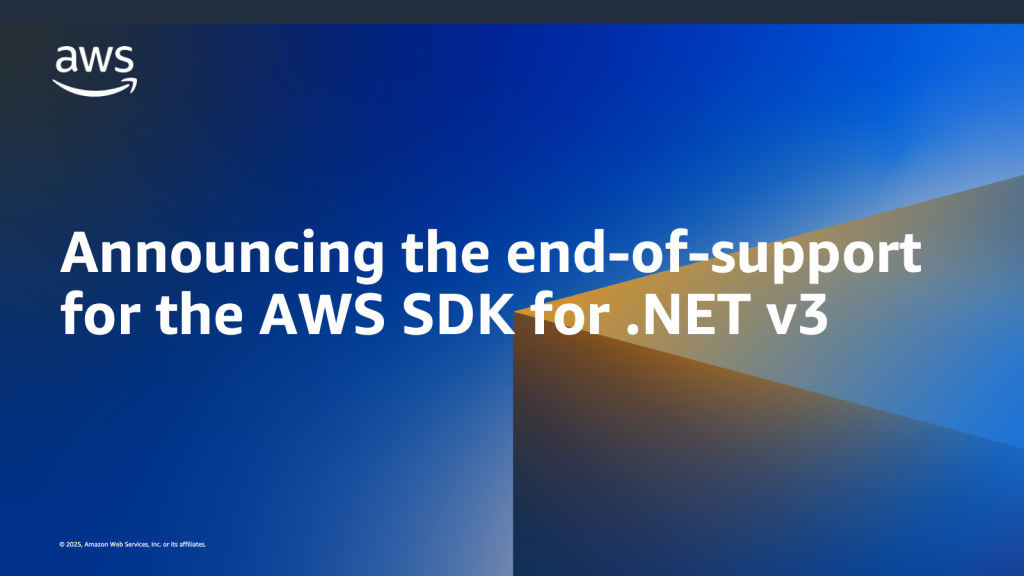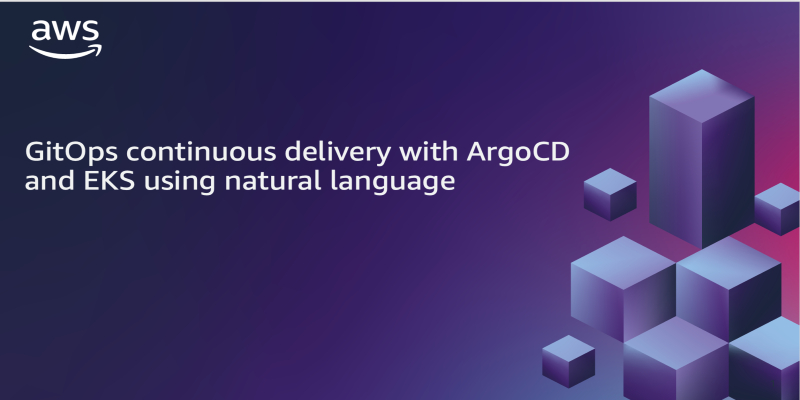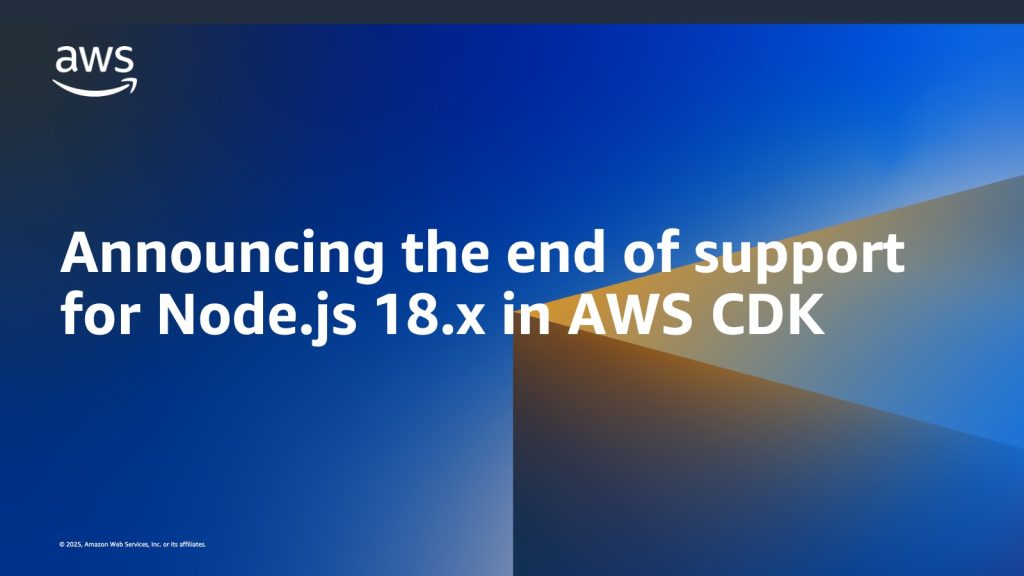AWS DevOps & Developer Productivity Blog
Category: Developer Tools
Reduce Docker image build time on AWS CodeBuild using Amazon ECR as a remote cache
In modern software development, containerization with Docker has revolutionized how we build and deploy applications. While Docker enables packaging applications into portable containers, the continuous need to update these images can be resource intensive. AWS CodeBuild addresses this challenge by providing a managed build service that eliminates infrastructure maintenance overhead. In this blog post, we’ll […]
Multi Agent Collaboration with Strands
In the evolving landscape of autonomous systems, multi-agent collaboration is becoming not only feasible but necessary. As agents gain more capabilities, like advanced reasoning, adaptation, and tool use, the challenge shifts from individual performance to effective coordination. The question is no longer “can an agent solve a task?” but “how do we organize execution across […]
AWS Cloud Development Kit (CDK) Launches Refactor
We are excited to announce a new AWS Cloud Development Kit (CDK) feature that makes it easier and safer to refactor your infrastructure as code. CDK Refactor aims to preserve your AWS resources as you rename constructs, move resources between stacks, and reorganize your CDK applications – operations that previously risked resource replacement. When writing […]
Introducing an Interactive Code Review Experience with Amazon Q Developer in GitHub
Code reviews are one of the most valuable rituals in software development. They help ensure quality, maintain consistency, and foster growth as engineers. But they’re also one of the most time consuming steps in the software development lifecycle. A common pattern I’ve seen is a developer opening a pull request (PR), receiving automated or peer […]
Measuring Developer Productivity with Amazon Q Developer and Jellyfish
Modern software development teams face increasing pressure to deliver high-quality code faster, while managing growing system complexity. Developers often spend significant time on necessary, but undifferentiated work, or “toil”. Toil is often manual, repetitive, and of limited enduring value, making it a strong candidate for automation or delegation to generative AI tools. The re:Invent 2024 […]
Announcing the end-of-support for the AWS SDK for .NET v3
We are announcing the end-of-support for the AWS SDK for .NET v3.x starting on March 1, 2026, in accordance with the SDK and Tools maintenance policy. On April 28, 2025, the next major version of the AWS SDK for .NET, version 4.x, became generally available (blog post). Version 4.x of the SDK includes bug fixes, […]
Announcing the end-of-support for AWS Tools for PowerShell v4
We are announcing the end-of-support for the AWS Tools for PowerShell v4.x starting on March 1, 2026, in accordance with the SDK and Tools maintenance policy. On June 23, 2025, the next major version of the AWS Tools for PowerShell, version 5.x, became generally available (blog post). Version 5.x of the AWS Tools for PowerShell […]
GitOps continuous delivery with ArgoCD and EKS using natural language
Introduction ArgoCD is a leading GitOps tool that empowers teams to manage Kubernetes deployments declaratively, using Git as the single source of truth. Its robust feature set, including automated sync, rollback support, drift detection, advanced deployment strategies, RBAC integration, and multi-cluster support, makes it a go-to solution for Kubernetes application delivery. However, as organizations scale, […]
Announcing the end of support for Node.js 18.x in AWS CDK
On November 30th, 2025, the AWS Cloud Development Kit (CDK) will no longer support Node.js 18.x, which reached end of life on April 30, 2025. This change applies to all AWS CDK components that depend on Node.js, including the AWS CDK CLI, the Construct Library, and broader CDK ecosystem projects such as JSII, Projen, and […]
Managing Amazon Q Developer Profiles and Customizations in Large Organizations
As organizations scale their development efforts, AI coding assistants that understand organization-specific patterns and standards lead to more efficient development processes and higher quality software delivery. Amazon Q Developer Pro helps address this challenge by allowing organizations to customize the AI assistant with their proprietary code and development practices. Through Amazon Q Developer profiles, teams […]
